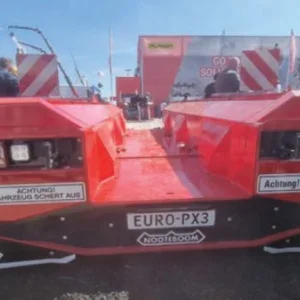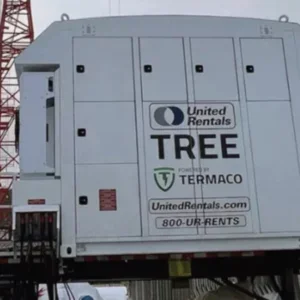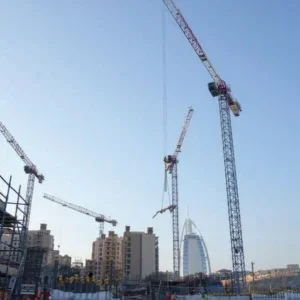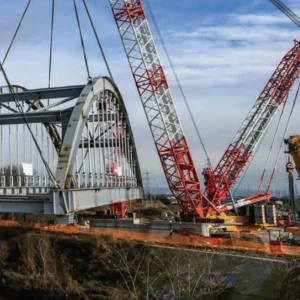Both firms sell to crane manufacturers, so many of the improvements are underneath the hood, so to speak, but both companies promise that the new systems will change the way cranes are operated, and the way they are designed and serviced.
Hirschmann’s new scalable mobile control system consists of lots of individual units, such as a new operating console, and controllers and sensors, that customers can arrange into as complex a control network as the machine needs.
Like the entire system, the operating consoles are modular. There are three display sizes (4.3” QVGA, 7” WSVGA, 10.4” VGA/SVGA), three types (monitor only, standalone unit, or unit with integrated PLC) and three modes of operation (by buttons, touch screens or thumbwheels). Builders can mix and match these with at least four types of 32-bit controllers of varying complexity, of varying numbers and types of inputs and outputs, and housings of differing environmental protection classes. All of the controllers have the same software and updates can be done by a USB stick without a PC.
“Now, we want to go with more open solutions,” Wolfgang Schenk, Hirschmann Electronic Control Systems sales and marketing business unit manager, tells Cranes Today. “More customers are doing programming themselves. We want to offer them a platform for everyone to do system integration.”
But Hirschmann is not going completely do-it-yourself. New standards for European machinery design are changing the way cranes are controlled, Schenk says. The standards aim to improve safety through more complex, but safer, computer control networks. “Now it is not enough for a signal path to go straight ‘sensor-logic-actuator’”. He says that to meet new safety norms, control systems need to do more than simply receive information from sensors, process it, and act on it by sending an appropriate output signal. It also needs to have another brain keeping an eye on inputs and outputs, and be able to turn off the machine if something seems to be going wrong.
In particular, Hirschmann’s new additional diagnostics hardware (a security controller and security task that monitors the main processor and control circuit) and software (a new security protocol) make the system compliant for EN ISO 13849-1 Performance Level C or D, depending on how the system is set up.
Hirschmann is currently beta-testing the new system on Terex-Demag crawler cranes.
Although Inter Control’s new Digsy v3 control system is also being used by Terex-Demag, in its upcoming 1,000t AT, the idea behind its system is completely different.
Instead of users building up a system of lots of nodes spread across a network, Inter Control is packing up all of the brainpower in one box. The box connects by a single cable to the main display terminal. In fact, for this new system there is a new terminal, with entry buttons and a touchscreen display.
The core of the Digsy v3 system consists of a controller (a 32-bit, 400MHz Mobile Turbo Controller, or MTC), input/output module or modules, and one or two displays. The architecture simplifies the network, which makes troubleshooting and fault diagnosis easier, the company says. It also costs less. A standalone industrial display unit with graphics, electronics and power supply purchased for a typical CAN-Bus crane control network might cost EUR2,500. “It is basically a PC,” says Thomas Pohlmann, Inter Control electronic division general manager. But a display linked to the main processor costs only EUR300.
Pohlmann says that automotive suppliers already use this architecture. A satellite navigation screen, for example, is not an independent component; it is just a display, connected to the main computer.






